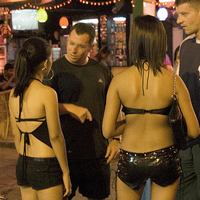Sex trafficking is an exceedingly grotesque, highly profitable component of contemporary slavery. In fact, no form of slavery is nearly as profitable, and it can be argued that none is as barbarically exploitive. In the course of 10 years of research across 18 countries, I have directly interviewed more than 500 slaves of all kinds, and some of the most heartbreaking tales I heard were those narrated by women and children who suffered years of sexual enslavement at the hands of traffickers and pimps. Though much has improved as a result of anti-trafficking activism, policy, law, and media coverage since I began my research, the crime of human trafficking remains poorly understood. When it comes to sex trafficking, this is particularly due to a tendency toward sensationalism rather than strategic analysis of how the crime functions. Like all forms of slavery, sex trafficking is a business, and understanding the business and economic functioning of the crime can provide insights into more effective ways to eradicate it.
One crucial point that must be established first is that slavery, by which I mean an individual held captive and coerced to perform labor or service with nominal or no compensation, still exists. A trafficked slave is one who is recruited or acquired through deceptive or coercive means, transported some distance (whether near or far), then exploited in slave-like conditions. For sex trafficking, this means exploitation in the commercial sex industry. There are various definitions of "slavery" dating back to the League of Nations Slavery Convention of 1926 and the ILO Forced Labor Convention of 1930. These early definitions focused on the exercise of power based on a right of ownership over another human being. Across the decades, international conventions and jurisprudence relating to slavery shifted away from targeting ownership toward instead targeting the actual nature of the exploitation, particularly as involves coercion (physical or other), nominal or no compensation, and the absence of freedom of movement.
At the same time, definitions of the term "human trafficking" -- such as can be found in the United Nations Protocol to Prevent, Suppress and Punish Trafficking in Persons (the Palermo Protocol of 2000) or the U.S. Trafficking Victims Protection Act (TVPA, of the same year) -- have historically suffered from a greater focus on the movement connotation of the term "trafficking," rather than on the exploitation involved. The result has been an elevated tactical prioritization on cross-border migration rather than on the purpose of trafficking: forced labor exploitation. This misplaced focus has in turn resulted in limited success in thwarting global human trafficking. It has also derailed countless prosecutions and left numerous survivors of trafficking unable to access protections in the destination country, as they are deemed migration offenders first and trafficking victims second, if at all.

